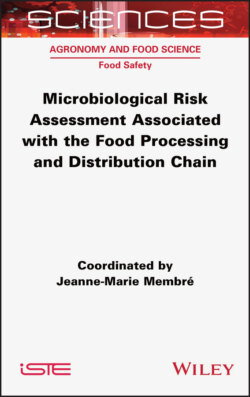Читать книгу Microbiological Risk Assessment Associated with the Food Processing and Distribution Chain - Jeanne-Marie Membre - Страница 22
1.1. Introduction
ОглавлениеContamination of food with microbial agents is a global public health problem. Microbial hazards in food include bacteria such as Salmonella, viruses such as norovirus, parasites such as trematodes and also prions. Diarrheal diseases are the most common diseases resulting from the consumption of contaminated food and are the cause of 550 million illnesses and 230,000 deaths each year (WHO 2020). Hazard identification serves to establish whether the hazard is probable or actual in the food product and to document important known information about the relationships and interactions between the hazard, the food and the host, and also their relationship to human disease. Given that a wide range of microbiological hazards can cause foodborne illness, hazard identification should determine whether a potential hazard is realistic for the food product concerned (FAO and WHO 2020).
Epidemiological data from disease surveillance programs or investigations of food-borne outbreaks are often the first clearly documented indications of a food safety issue associated with a pathogen causing adverse effects. Food contamination surveillance data, along with product and process assessments, can help identify combinations of hazards and foods. Evidence from these sources is usually quantitative (i.e. it includes information on the concentration or number of units of the hazard in the food) and may also provide information that feeds into other stages of microbiological risk assessment, such as exposure assessment and/or establishment of a dose–response relationship. Whole genome sequencing (WGS) is increasingly used for the surveillance of foodborne pathogens, the investigation of epidemics and the search for the sources of contamination throughout the food supply chain (Rantsiou et al. 2018).
That being said, the epidemiological data must be cross-referenced with product knowledge, in other words its formulation, its process, its distribution channel and the way it is used by the consumer, before conclusions can be drawn on the relevant hazards. Finally, the behavior of the hazard in the food, in other words its ability to multiply, its resistance to stress and its survival, or its inactivation, is the third key element to be taken into account in hazard identification. (Figure 1.1). We will return later in the chapter to these different types of data and their cross-use.
Figure.1.1. Structuring of information essential to hazard identification. Created with BioRender.com
